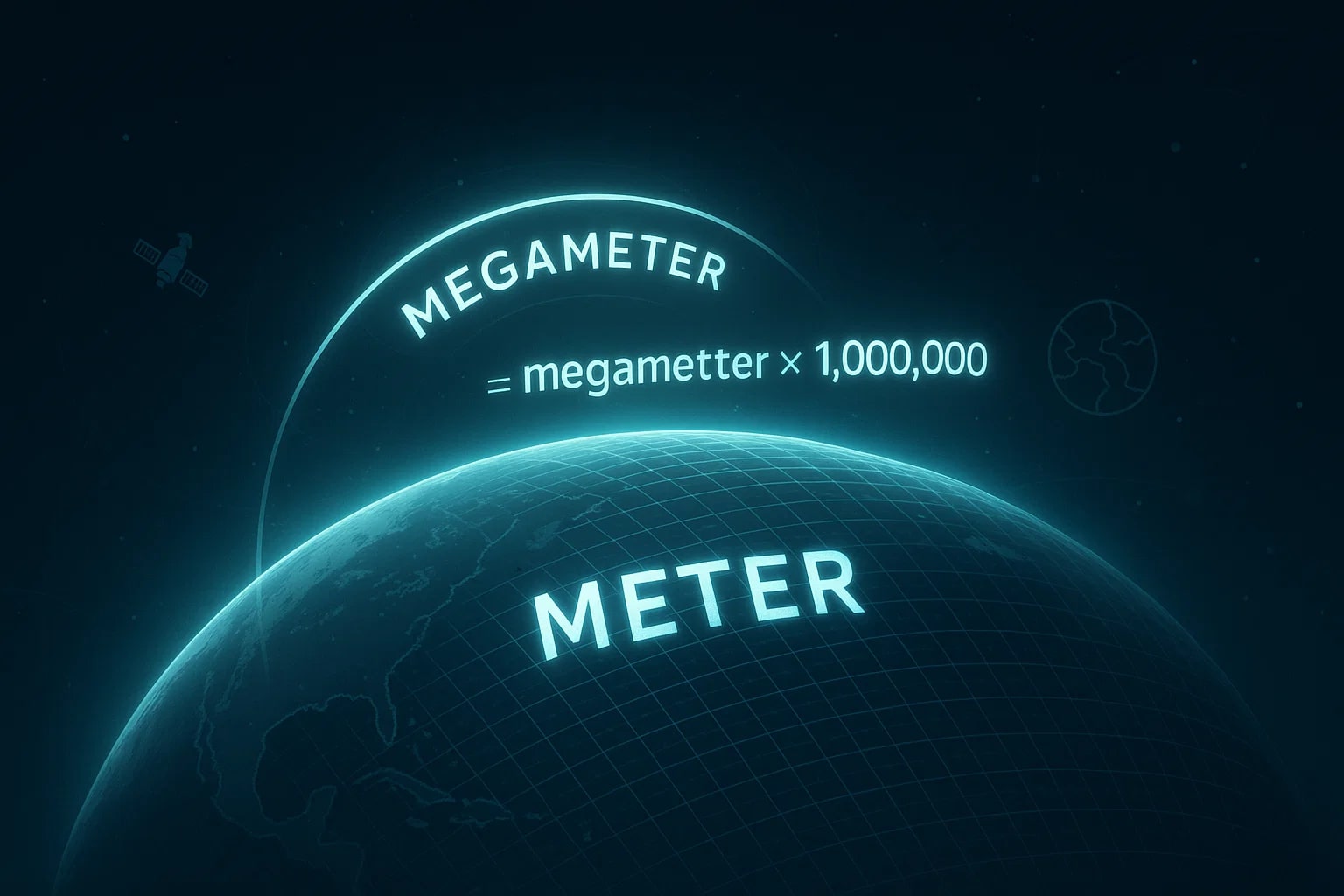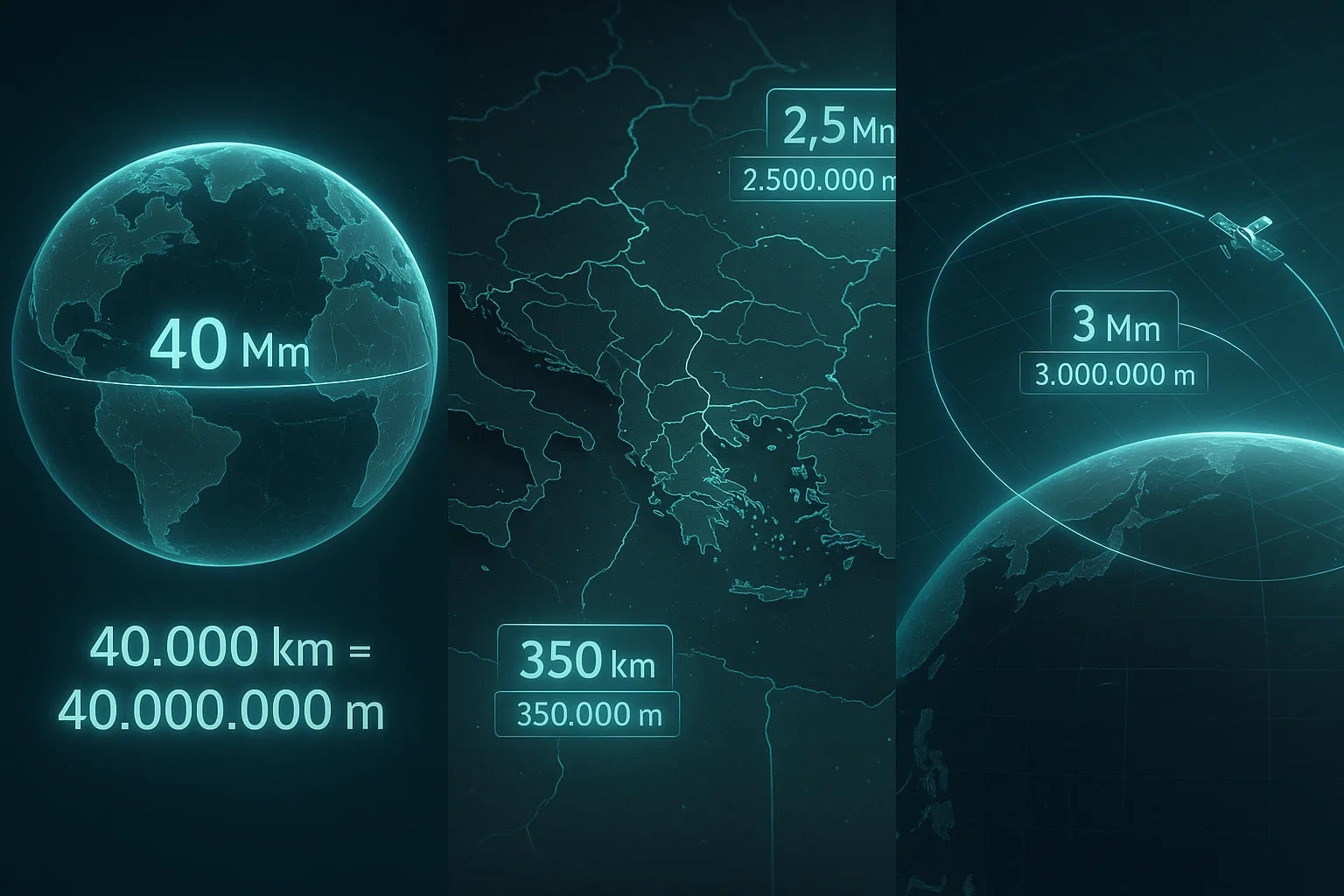megameter to meter – How to convert Mm to m
Converting from megameter to meter demonstrates how the metric system handles very large distances with simple scaling. The megameter, equal to one million meters, is rarely used in daily life but can appear in geography, planetary science, and large-scale mapping. The meter, however, is the SI base unit and is used universally. Learning how to convert Mm to m shows how easy it is to move from massive to standard scales.

What is a Megameter (Mm)?
A megameter equals one million meters:
1 Mm = 1,000,000 m.
It is not common in everyday measurement but is useful in astronomy, geography, or geology to express large distances without excessive zeros.
What is a Meter (m)?
The meter is the SI base unit of length. Defined by the speed of light, it is used worldwide in science, engineering, trade, and everyday contexts as the universal length unit.
How to Convert Mm to m
The formula is:
meter = megameter × 1,000,000
For example, let’s convert 3 Mm into meters:
meter = 3 × 1,000,000 = 3,000,000 m
So, 3 Mm = 3,000,000 m.
For other conversions, you can try the Length Converter or explore additional tools in the Conversion Tools.
Do you know?
-
The prefix mega- comes from Greek, meaning “great” or “large,” and represents 10⁶ in the metric system.
-
Earth’s diameter is about 12.7 Mm (12,742 km), showing where this unit can be practical.
-
The meter was first defined in the late 18th century and today is tied to the speed of light for accuracy.
-
Astronomers sometimes use megameters for planetary diameters, while using larger units like astronomical units (AU) for interplanetary distances.
Big Scales in Geography and Science
Megameters are especially useful for describing distances that are too big for kilometers but too small for astronomical units. For instance, the circumference of Earth is about 40 Mm. Instead of writing 40,000 km or 40,000,000 m, using Mm keeps the numbers simpler.
Scientists studying tectonic plates, planetary geology, or satellite orbits may use megameters to balance clarity and scale. Converting back to meters makes results easier to integrate with other SI-based calculations.

Scaling Made Simple
The conversion from megameter to meter demonstrates the strength of the metric system: every unit scales by powers of ten. This consistency makes it easy to handle everything from nanometers in materials science to megameters in planetary studies.
By applying this straightforward formula, you can confidently connect large-scale distances with the standard SI unit of measurement.

